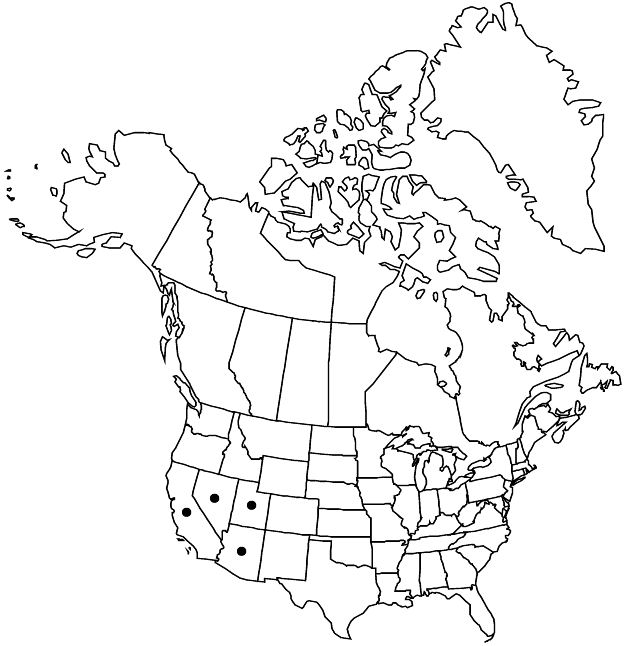Difference between revisions of "Ziziphus divaricata"
Fl. S. Calif., 226. 1923.
FNA>Volume Importer |
FNA>Volume Importer |
Revision as of 18:18, 24 September 2019
Shrubs or small trees, 1–3(–4) m; secondary branches gray-green to white, pruinose, minutely hirtellous to short-villous, usually densely so, glabrescent, thorn-tipped, axillary thorns solitary, with 0–1 nodes, 2–10 mm, stipular spines absent. Leaves deciduous, alternate or fascicled; blade gray-green, glaucous abaxially, dull green adaxially, ovate, oblong, or elliptic to nearly linear, 0.3–2(–2.5) cm, relatively thin-herbaceous, base rounded to truncate, margins entire or wider leaves distally toothed, apex rounded to slightly retuse, both surfaces persistently hirtellous to short-villous; 1-veined from base. Inflorescences pedunculate thyrses, 10–20 mm, (5–)10–30-flowered, peduncles 2–4 mm, equaling or longer than pedicels; hypanthium yellow to orangish or slightly purple, densely and persistently hirtellous; sepals yellow to orangish or slightly purple; petals yellow to pale yellow or nearly white. Drupes dark blue to blue-black or purplish, globose to slightly elongate, 7–10 mm.
Phenology: Flowering Apr–Jul(–Sep).
Habitat: Washes, basin edges, roadsides, mesquite and tamarisk thickets.
Elevation: (20–)200–1300 m.
Distribution

Ariz., Calif., Nev., Utah, Mexico (Baja California, Sonora).
Discussion
Ziziphus divaricata usually has been regarded as Z. obtusifolia var. canescens, but Z. divaricata and Z. obtusifolia are discontinuously distinct morphologically and geographically. Although it seems clear that they have a sister relationship, treatment of each at specific rank emphasizes their apparent evolutionary independence.
Selected References
None.